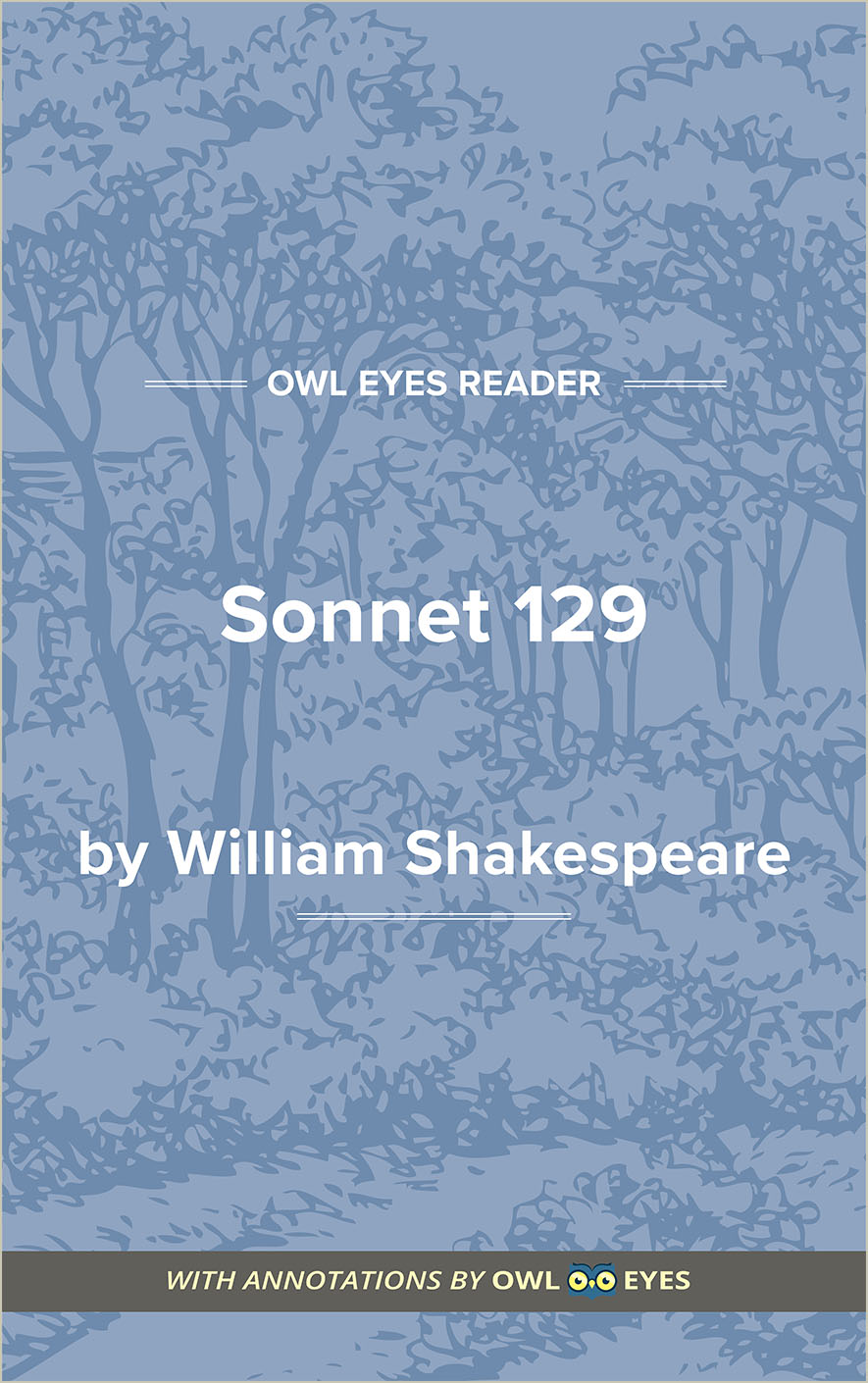- Annotated Full Text
- Literary Period: Renaissance
- Publication Date: 1609
- Flesch-Kincaid Level: 22
- Approx. Reading Time: 0 minutes
Sonnet 129
This sonnet occurs shortly after the speaker shifts from addressing the fair youth to talking about the “dark lady.” Unlike his ethereal relationship with the fair youth, the speaker’s relationship with the dark lady is base and physical. This poem, the third of the dark lady sonnets, marks the beginning of the couple’s sexual relationship. The speaker uses blunt, often violent descriptions to describe the lustful build up to the act and the shameful fall afterwards. The majority of the poem takes the form of adjectival phrases describing the speaker’s “lust,” making the structure of this poem unstable. There is no volta, nor are there discrete quatrains that build a logical argument. The poem is only a disjunct description of feeling. The final couplet offers a paradox that projects the speaker’s experience onto the world. He claims that the entire world has learned the lesson of this poem but that they will repeat the speaker’s mistakes nonetheless.
- Annotated Full Text
- Literary Period: Renaissance
- Publication Date: 1609
- Flesch-Kincaid Level: 22
- Approx. Reading Time: 0 minutes

